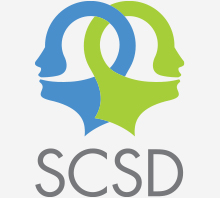To most adults, the ability to read and write is a seemingly simple concept, learned early in life and used daily without effort or conscious thought. Many children, however, struggle with reading, and their difficulties began with oral language (Justice, 2006). Without the precursor skills for reading and writing in place, these children may struggle with academics, which may ultimately limit their future opportunities in life. Due to the impact these early literacy skills can have on a child’s life, attention to early intervention has become a hot topic in elementary schools.
In Laval, one school board in particular, Sir Wilfrid Laurier, partnered with McGill’s School of Communication Sciences and Disorders during the 2010-2011 school year to provide early screenings and interventions to the kindergarten students, following a model called Response to Intervention (RTI). This model is a tiered-system model of reading intervention based on principles of prevention (Justice, 2006). Early intervention is provided for all students who do not respond quickly to high quality teaching in the kindergarten classroom but unnecessary labelling of the students is avoided (Justice, 2006). At this stage no distinction is made between children with a reading disability and those who are experiencing difficulties due to lack of exposure and experience. “Early identification and intervention is the key”, says Kia Rashidan, the supervising Speech-Language Pathologist (SLP) at Sir Wilfrid Laurier. “We decided not only to assess (all students), but also give intervention to the ones who would be found to be at risk after the initial assessment.”
Kia was a key player in the implementation of this model. According to Justice (2006), the SLP’s most effective role is to ensure reading skills are part of everyday instruction in the early years, by collaborating and co-teaching with other teaching professionals. The SLP must identify and monitor the students identified at risk for reading difficulties, and organize intervention for these students when necessary. Involving McGill students to carry out the assessments and interventions gave Kia the extra resources needed to carry out the task.
According to Justice (2006), in the first tier of the RTI model, all children are exposed to reading enrichment in the classroom in the early school years and screened for lags in reading skills. In the fall of 2010, four McGill Masters students conducted screenings with 49 kindergarten students using a newly developed screening tool suggested by McGill staff. “This tool was based on the research of Hugh Catts et al. (2001) published in the journal of Language, Speech, and Hearing Services in Schools, titled Estimating the Risk of Future Reading Difficulties in Kindergarten Children: A Research Based Model and its Clinical Implementation” explains Kia. “Thirteen students scored below the average range (and) after a second round of more thorough testing, seven students were identified as needing extra support.” This identification, for Kia, is the “first positive step” to prevent students from “flying under the radar”. “I have come across students in later grades… (who) can barely read or write. It is regrettable that we did not identify such students at an early grade and helped them sooner.”
In the second tier, those children at risk for future difficulties are monitored and their progress is tracked as they are provided with additional support (Justice, 2006). In winter 2011, three McGill students carried out interventions with a focus on the seven students identified in the fall. Laura Dyck and Silvia D’Onofrio, two of the McGill SLP students involved in the tier II interventions worked in small groups of 3-6 students and with individual students one-on-one. During interventions, Laura explained that they used “a variety of phonological awareness activities”, which Justice (2006) explains to be the building blocks required before future reading interventions can be implemented. They also facilitated reading and narrative tasks, and developed exercises for the parents to work on at home. To measure progress, Silvia explains that “(we) measured the data by tracking the percentage of accuracy over sessions. (We) also asked teachers, support teachers, and parents for their feedback…to verify and ensure that progress was generalized and not only limited to the session.” “Results were mainly positive”, she continues, “meaning that even if small, some improvement was present.” Laura explains that “assessments were completed before and after (intervention) to measure the risk for future reading difficulties”. In fact, the level of risk measured before and after interventions for the seven students identified was greatly reduced for each student.
“The students needing support will continue to receive resources,” reports Kia, “the students’ names are on a “to monitor” list and will be assessed…in grade two and beyond.” This is the last phase, tier III of the RTI model. As the monitored children reach later grades, their reading skills will be assessed at a deeper level, and special education support provided as necessary (Justice, 2006).
Implementation of the RTI model in primary schools in Montreal appears to be a win-win situation for all involved. The McGill students learn valuable skills regarding assessment and intervention, and more importantly, they are made aware of the necessity of implementing such a reading intervention program once they become clinicians themselves. Furthermore, the collaboration with McGill students gives the SLP’s in the schools the necessary personnel to carry out this extensive task. But the most significant benefit of uniting evidence-based intervention programs with up-and-coming student clinicians is that the elementary school students are getting the early intervention and support that they need to succeed at school.
Justice, M. (2006). Evidence-Based Practice, Response to Intervention, and the Prevention of Reading Difficulties. Language, Speech and Hearing Services in Schools, 37, 284-297.

